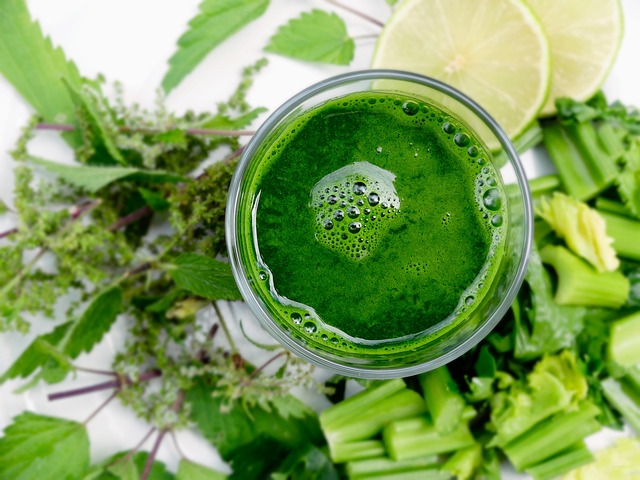Every kitchen has a corner that quietly promises nourishment and comfort: the humble pot of vegetable broth. This clear, savory liquid is more than a base for soups; it is a conduit for nutrients, a source of hydration, and a vehicle for mindful eating. While the term “broth” often conjures images of thick stews, the real power of vegetable broth lies in its simplicity and the sheer variety of flavors that can be coaxed from ordinary produce. In this article we’ll explore how this staple can shape a healthier lifestyle, reveal the nutritional treasures it hides, and offer practical ways to weave it into daily meals.
The Nutritional Profile of Vegetable Broth
Despite its light appearance, vegetable broth packs a subtle yet significant nutrient payload. When you simmer vegetables—carrots, onions, celery, garlic, herbs, and leafy greens—you extract water-soluble vitamins, minerals, and phytonutrients into the liquid. The resulting broth contains:
- Vitamins A, C, and K from cruciferous and leafy vegetables, supporting vision, immune function, and blood clotting.
- Minerals such as potassium, magnesium, and calcium that help regulate blood pressure, muscle function, and bone health.
- Antioxidants like beta‑carotene and quercetin which combat oxidative stress and may reduce inflammation.
- Small amounts of protein and fiber retained from root vegetables and seeds, providing a gentle energy source and aiding digestion.
Because the broth is low in calories—typically 10–30 calories per cup—it is an excellent base for weight management. The volume of liquid encourages satiety, allowing you to feel full without a high calorie load.
Crafting Your Own Vegetable Broth
Homemade broth offers control over sodium levels and flavor depth. Here’s a straightforward recipe that can be adjusted to match your taste and pantry:
- Chop a mix of vegetables: 2 carrots, 2 celery stalks, 1 onion, 3 cloves of garlic, a handful of kale or spinach, and a bay leaf.
- Place the vegetables in a large pot, cover with 12 cups of cold water, and add a pinch of sea salt.
- Bring to a gentle simmer, then reduce heat and let it cook for 45–60 minutes. The longer you simmer, the richer the flavor.
- Strain the liquid through a fine mesh sieve, discarding solids.
- Store in the refrigerator for up to five days or freeze in individual portions for later use.
Feel free to experiment: add herbs like thyme or rosemary, or a splash of soy sauce for umami. The key is patience—slow cooking releases the maximum amount of nutrients.
Integrating Broth Into Your Daily Meals
One of the greatest advantages of vegetable broth is its versatility. Below are practical ways to incorporate it into a balanced diet:
“Instead of reaching for a processed soup, pour a warm cup of homemade broth and taste the difference.” — Nutritionist Insights
•Start the day with a steaming cup of broth as a gentle wake‑up call, helping to hydrate the body after sleep.
•Replace coffee on cold mornings with a warm broth infusion, which provides a caffeine‑free boost and a steady stream of electrolytes.
•Use it as a sauce in stir‑fries, adding flavor without extra oil.
•Thin out sauces for pasta or rice dishes, creating a low‑calorie base that still delivers depth.
•Cool and freeze portions for quick meals; simply reheat with a splash of water or a pinch of salt and seasonings.
The Lifestyle Impact of Regular Broth Consumption
Beyond nutrition, consuming vegetable broth regularly fosters mindful eating habits. The ritual of simmering and sipping encourages slow, intentional meals, which research links to better digestion and reduced overeating. Additionally, broth’s hydration benefits—especially when infused with electrolytes—help maintain energy levels throughout the day.
For those on plant‑based diets, broth can bridge the gap between protein and fiber. Adding legumes or beans to the simmer can elevate protein content while preserving the gentle flavor profile. Moreover, broth serves as a natural de‑stressor; the warm liquid stimulates the parasympathetic nervous system, providing a calming effect in hectic schedules.
Practical Tips for Maximizing Broth’s Health Potential
•Watch sodium: While herbs and spices naturally add flavor, limiting added salt preserves the broth’s low‑sodium benefit.
•Use seasonal produce: Fresh, in‑season vegetables bring higher nutrient density and better taste.
•Preserve leftovers: Freeze in portioned containers to avoid waste and reduce preparation time.
•Pair with whole grains: Combine broth with quinoa or barley to create a complete protein profile.
•Season thoughtfully: Add citrus zest or fresh herbs at the end of cooking to preserve delicate flavors.
Conclusion: Embracing Vegetable Broth as a Lifestyle Choice
Vegetable broth embodies the principles of simplicity, nourishment, and mindful consumption. Its low calorie content, high mineral density, and versatility make it a natural ally for those seeking a healthier lifestyle. By making broth at home, you reclaim control over ingredients, reduce sodium, and tailor flavors to personal preference. Whether you sip it as a warm morning ritual, use it to thicken sauces, or blend it into nutrient‑dense soups, vegetable broth encourages a slower, more attentive approach to eating. Over time, this habit can reshape dietary patterns, support hydration, and contribute to overall well‑being. In the quiet steam rising from a pot of vegetable broth, there is a gentle reminder: health can be simple, yet profoundly powerful.




